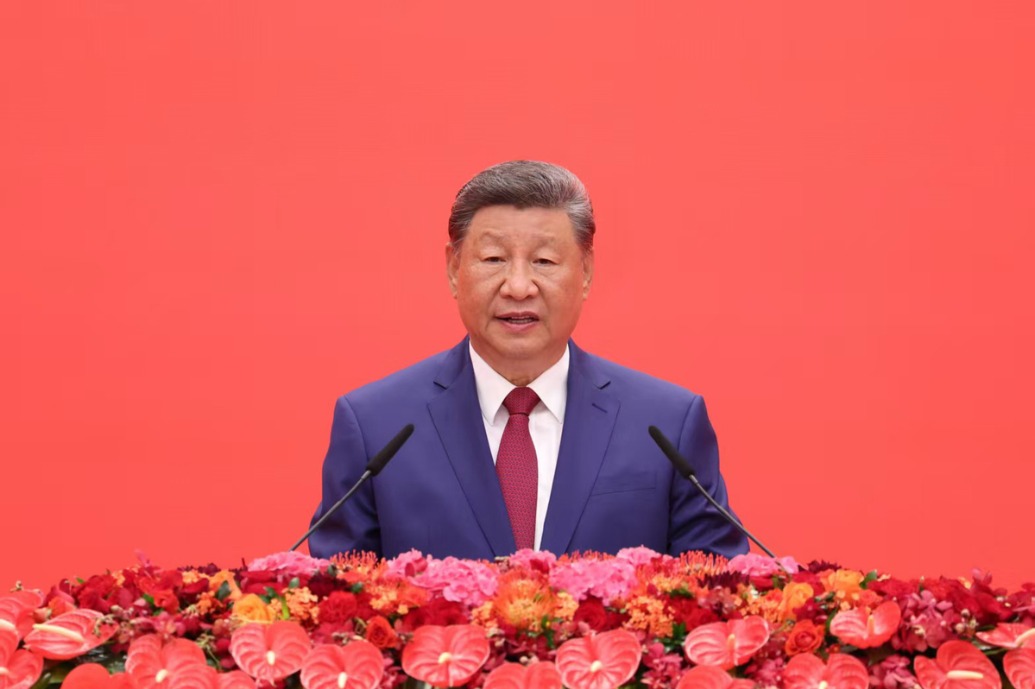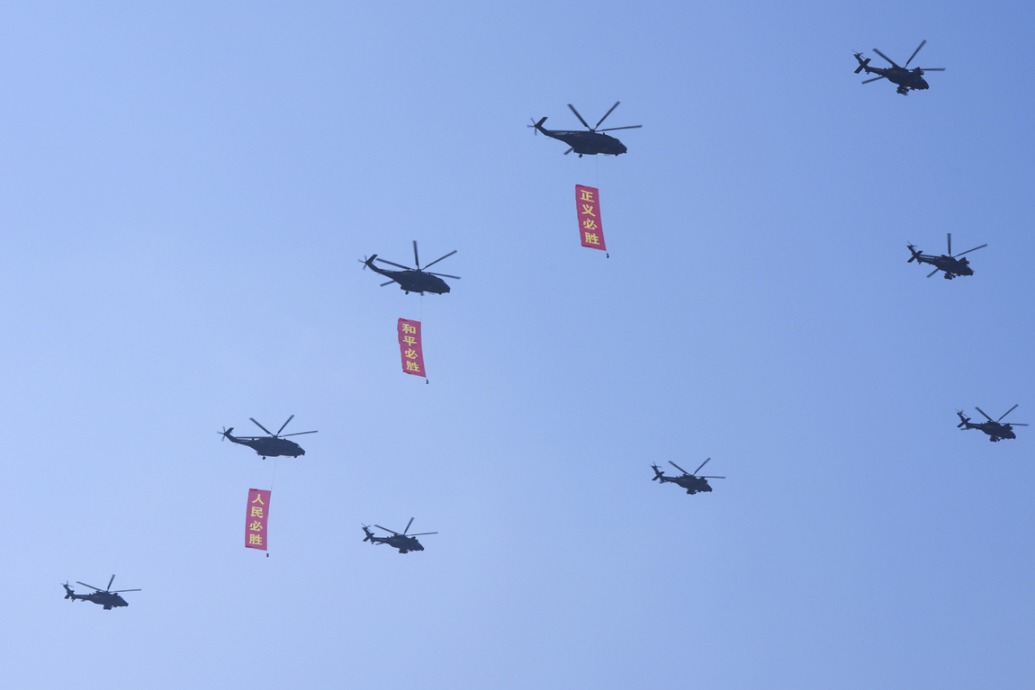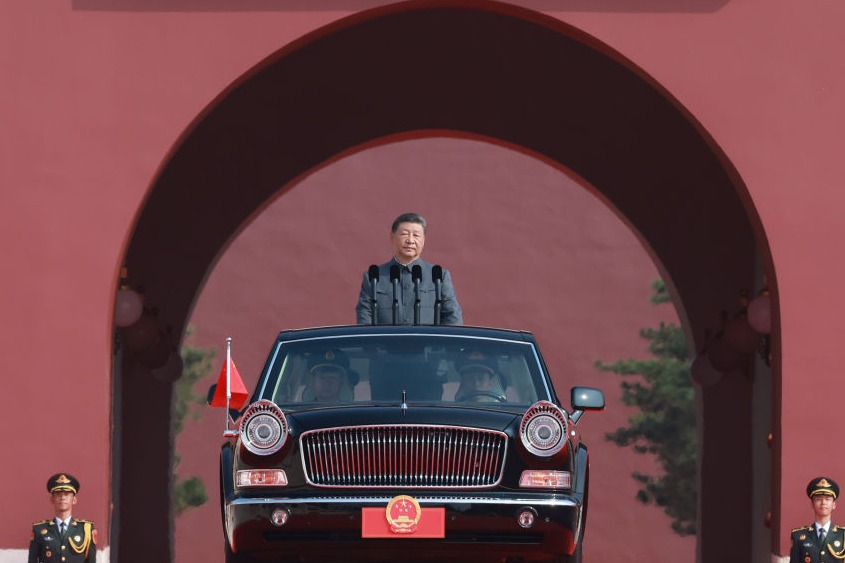Artisans give Games a delicate lace face
A craft imported from Italy a century ago and refined in China is making its mark on a big sports festival, Ma Zhenhuan reports in Hangzhou.

The Xiaoshan Museum in Hangzhou made a delicate donation recently-mascots of the 19th Asian Games Hangzhou 2022, made in Xiaoshan lace.
The mascots were created by Wang Lihua, a master of arts and crafts at the Xiaoshan Lihua Lace and Bead Embroidery Research Institute and an inheritor of national intangible cultural heritage for Xiaoshan lace and bead embroidery.
Wang told of how she was inspired by the Hangzhou Asian Games mascots and then blended a variety of colored threads and needlework into the new handicrafts to bring out the spirit of the mascots.
"There are more than 100 artworks made in Xiaoshan lace, Hang embroidery, an ancient art that has been practiced in Hangzhou, and bead embroidery about the Asian Games," she says. "It took us almost a week to complete each piece of art.
"In addition, our team has embroidered some competition venues of the Games, including Hangzhou Olympic Sports Stadium, known as the 'big lotus', as well as the logos, emblems and other cultural symbols of the Asian Games."
"After the mascots of the Asian Games were unveiled two years ago, I decided to lead my team to make some lacework art echoing the 19th Asian Games Hangzhou 2022 and the 4th Asian Para Games Hangzhou 2022," Wang says.
"I think the Asian Games will bring many opportunities to develop our intangible cultural heritage and let it go out of Xiaoshan and even make it onto the world stage."
The Games have been postponed by the Olympic Council of Asia and the Hangzhou Asian Games Organizing Committee, which was scheduled to be held in Hangzhou from Sept 10 to 25, 2022, after "carefully considering the pandemic situation and the size of the Games".
Xiaoshan lace, a traditional handicraft rooted in Zhejiang, features exquisite layouts, outstanding artistry and various knitting methods.
In Xiaoshan district, lacework is used to make household items such as bedspreads, tea table cushions and sofa covers, and the art form is continuing to evolve.
"From the original design with flowers and birds to the present characters, from the previous plant vines to the present buildings, we try to make lace-related handicrafts and products more alive," Wang says. "These combine with contemporary elements, thus attracting more young people to appreciate traditional techniques."
Lace-related handicrafts and products from Xiaoshan are known worldwide and have been exported to more than 60 countries and regions.
In 1919 Italian missionaries brought the lace-making technique to Xiaoshan, dubbed the hometown of Chinese lace. Xiaoshan women were first exposed to lace weaving in the early 20th century, because they were good at growing cotton, weaving silk, rearing silkworms and reeling silk, and were known for their intelligence and dexterity.
A Shanghai businessman, Xu Fangqin, opened the first lace factory in Xiaoshan, George Lace Factory. Since then, Xiaoshan lace factories have flourished and Xiaoshan Lace has become famous. Xiaoshan Lace is known for its delicate designs, exquisite patterns and fine embroidery.
"At the beginning, the stitching method was very simple," Wang says. "There are more than 40 kinds of stitches today, which are completely different from the original lace-making technique in 1919, so today a localized and traditional lace-making technique is turned out in Xiaoshan."
In May 2005 Xiaoshan lace was listed among the first categories of intangible cultural heritage in Zhejiang province. It was listed as a national intangible cultural heritage representative project in June last year.
The Xiaoshan Lihua Lace and Bead Embroidery Research Institute was established in 2018, the original aim being to explore Xiaoshan's intangible cultural heritage and its historical memory, Wang says.
Explaining why she has devoted herself to lace work, Wang says: "I recall when I was very young helping my parents thread needles. So I was heavily influenced by what I saw and heard. I then learned calligraphy, Chinese painting and Hangzhou embroidery. That was all when I was a child, and it's helped me to innovate and pass on our intangible cultural heritage."
In the early years more than 200,000 women in Xiaoshan were highly skilled in working with Xiaoshan lace; today only a few people continue to learn the skills, but as an inheritor of the craft Wang is intent on seeing that it never dies.
She and her team have visited many old Xiaoshan lace artists to learn their skills and record their techniques, leaving valuable information about Xiaoshan lace, and have also created a lot of artwork that integrates traditional Chinese embroidery skills into Xiaoshan lace.
The Xiaoshan research institute is also an intangible cultural heritage experience site, and it is open to the public free of charge.
"It's for those who are interested in the lace-making technique,"Wang says. "In addition many special events are held every year for both children and adults, and these attract about 30,000 people a year, especially during Chinese festivals such as Qixi Festival, or Chinese Valentine's Day, and Dragon Boat Festival."
Fang Xiaoying and Zhang Xiang contributed to this story.



Today's Top News
- Clarion call for safeguarding multilateral trade system for the common good of world
- Xi delivers speech at V-Day reception
- China committed to path of peaceful development: Xi
- Xi appears at center of Tian'anmen Rostrum
- Event to share glory of victory in war of resistance
- China's military tech strengthens global peace































